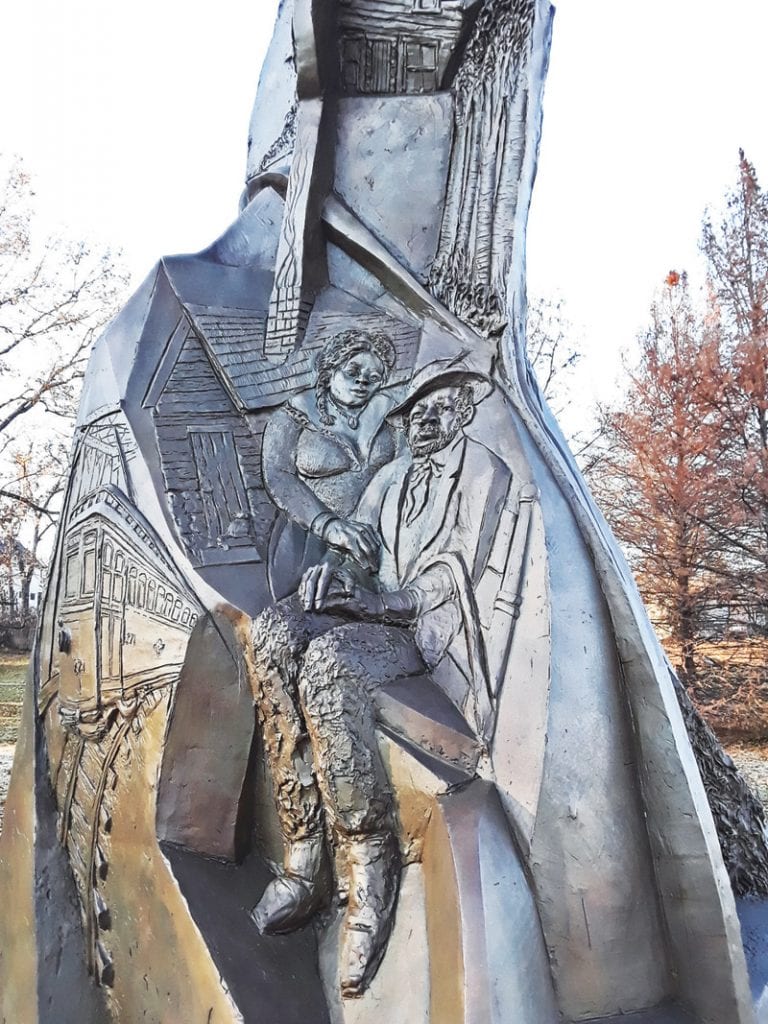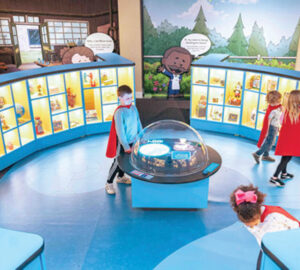creve coeur
The Nazis murdered 6 million Jews during WWII, many of them gassed and cremated at death camps, Auschwitz being the most notorious. Incomprehensibly, fact-resistant people deny the Holocaust even happened. Against this stupefying backdrop, meanwhile, hate crimes against Jews are on the rise. It has been only 75 years since Auschwitz was liberated, an event commemorated on Jan. 27, International Holocaust Remembrance Day. On that Monday, the St. Louis Holocaust Museum & Learning Center marked its 25th year by unveiling plans for an $18 million world-class complex (pictured at top) to be built on the Millstone Campus adjacent to the Jewish Federation of St. Louis, tripling the space of the existing museum to 35,000 square feet. Six local Holocaust survivors lit candles during a solemn ceremony. Also, the museum was awarded a $750,000 challenge grant from the National Endowment for the Humanities for the expansion. Groundbreaking is slated for May at the northwest corner of Lindbergh Boulevard and Schuetz Road in an unincorporated county near Creve Coeur, with completion set for late 2021. Everyone must use “the lessons of the Holocaust to address bias, bigotry and hate,” says Sandra Harris, executive director of the museum, which hosts 30,000 visitors a year. She notes that it should become a regional destination to learn the history of the Holocaust—and help visitors understand and confront the hatred of today. Through interactive exhibitions, programming and self-reflection, visitors—only 10% of whom are Jewish—will be able to explore how bias affects daily life. Lessons from the Holocaust show how stereotypes can turn to prejudice, violence and, to the horrifying extreme, genocide. The museum’s introductory presentation will orient guests before immersing them in history, whereupon they will be challenged to understand perspectives of the resistance, collaborators, bystanders, liberators and victims. Anyone may connect with survivor stories from a collection of 235 oral histories. Volunteer docents, including second- and third-generation Holocaust survivors, will continue to bring stories to life. The museum’s collection of 12,000-plus artifacts conveys the range of human experience embodied in this history, and a climate-controlled, secure archive will protect and preserve these precious items and any additions for on-site research by students and scholars.
webster groves
The last time I’d seen Barbre Park, a mostly flat space at the bottom of a hill at Kirkham and Elm avenues in north Webster Groves, Canada geese and ducks had discovered the wide expanse of standing water after a rain. Back when I lived in that neck of the woods (Glendale), that’s what the park looked like much of the time: marshland. So, when torrential rains drenched the metro a while back, I went for a look. A truck was parked in a driveway across Elm, pumping out a basement. But in the corner of the park at a low point, there was something brand-new, to me at least—a bronze sculpture (no, not a rubber duck, although my inner wag had thought that appropriate for an obviously overlooked part of the city parks portfolio). It’s quite distinctive, and distinguished: an 11 1⁄2-foot-tall tribute to the largely African-American community that once had thrived there. Representations of schools, churches, railroads and the citizens themselves comprised the bas-relief surface of what could be an abstract wing or finger pointing skyward, tilted toward the residences up the hill. That was an intent of the piece, by renowned black sculptor Preston Jackson. Stones from the demolished Rock Hill Presbyterian Church, built in 1845 and demolished in 2012, have been added to the base. The $150,000 artwork was funded entirely through private donations. There aren’t many pigeons around to sully the sculpture, as is the case with monuments elsewhere. But more significantly, Canada geese and ducks won’t find Barbre Park a suitable landing place anymore. There was no standing water, as I had anticipated. Installation of the sculpture included addressing drainage problems, especially at the corner where it is situated. But when I left, alas, a hose still snaked from the truck across the street into the front door of the flooded house.
cwe
If you consider yet another fine eating and drinking establishment as a pawn in the way of the St. Louis Chess Club’s expansion, it’s check … and … mate. Late last year, Brennan’s announced it would close to accommodate the club’s new footprint, with hopes to reopen at a later date somewhere else in the CWE. In early December, it was Culpepper’s at the intersection of Maryland and Euclid. FroYo folded, too. All three were on the same block as the chess club, which is right across Maryland Avenue from its affiliate (teammate?), the World Chess Hall of Fame. The world’s largest chess piece—a 20-foot-tall mahogany king (what else would you expect?)—looms out front. But real estate is not three-dimensional chess, and as far as we know, the club is planning no further moves at this point on its side of the street. A marketing official with the club said plans are still evolving with regards to square footage, project start date, additional programming and so on, noting that those would be announced soon. Meanwhile, the giant wooden king appears to have stayed put, and therefore can’t be suspected of contributing to additional upheaval in the dining and drinking landscape. Take, for example, the recent closing of Bar Louie. Its parent company has declared bankruptcy, and the location at 14 Maryland Plaza shuttered … although the Kirkwood, Chesterfield and St. Charles locations remain open. Plus, the rules of chess would prohibit taking this particular piece; uh, place. It’s too far away (halfway down the next block), and although a king can move in any direction he wishes, he only can move one space at a time.
notable neighbors
ladue
Twenty-five years ago, Margaret Hvatum would get winded and have to stop on her way to the back of Walgreens to pick up her COPD prescription. Today, at 64, Hvatum is a marathoner who has already completed races in each of the 50 states and is well on her way to completing her second round of the nation, state by state. Yes, she sets the bar high for herself. One could say she’s a marathon maniac, and one’s not just throwing words around here. Officially, a bronze-level Marathon Maniac must complete two races within 16 days. In fact, this maniacal mom of three sons has done that at least twice during her quest to join the 50 States Marathon Club. Over one weekend, she ran a 26.2-mile race in Rhode Island and another in Connecticut; on another occasion, she wrapped up both a New Hampshire and Maine marathon on consecutive days. You could say she’s run as far as she has mostly by disobeying doctor’s orders. (She was misdiagnosed with COPD in 1995. Turns out she has asthma.) “The next day, I started running,” she says. After a pause, she grins. “It may not have been the smartest idea.” Of course, she didn’t go for marathon medals immediately. As an engineer with companies like Texas Instruments, she’s eminently practical. (Hvatum now teaches Information Systems at STLCC-Meramec.) She methodically worked her way up from short distances and, after a while, entered 5K and 10K races. “I can do better than that,” she recalls thinking to herself. So she read a book on training for a marathon, following its instructions to the letter. Then, after moving back to the Lou in 1995 from the Boston area, she ran her first half-marathon in 1998. (To your question, she graduated from Burroughs in 1973 and went on to finish a master’s at MIT.) The medal from our (brrr) Frostbite Series this winter that she’s holding in the photo features a Yeti; she ran 13.1 that day. Over hilly, Athens-to-Sparta-long courses from Alaska to Florida, Hvatum has particularly loved the scenery in Manitowoc, Wisconsin, and Newport, Rhode Island. Once, she was momentarily spooked during the Area 51 race in Nevada at midnight by a light moving slowly in the distance that turned out to be a terrestrial vehicle. Importantly, for many years, she’s been racking up thousands of miles not only for herself, but for the Leukemia & Lymphoma Society, which funds research for cancers of the blood and related systems. A breakthrough in treatment for acute myelogenous leukemia at our local Siteman Cancer Center also may boost progress in fighting it elsewhere. To date, she has raised more than $100,000. In March, she’s running a marathon in Asheville, North Carolina, for LLS. For details of her particularly personal mission, visit pages.lls.org/tnt/gat/ashvle20/teamhvatum.










